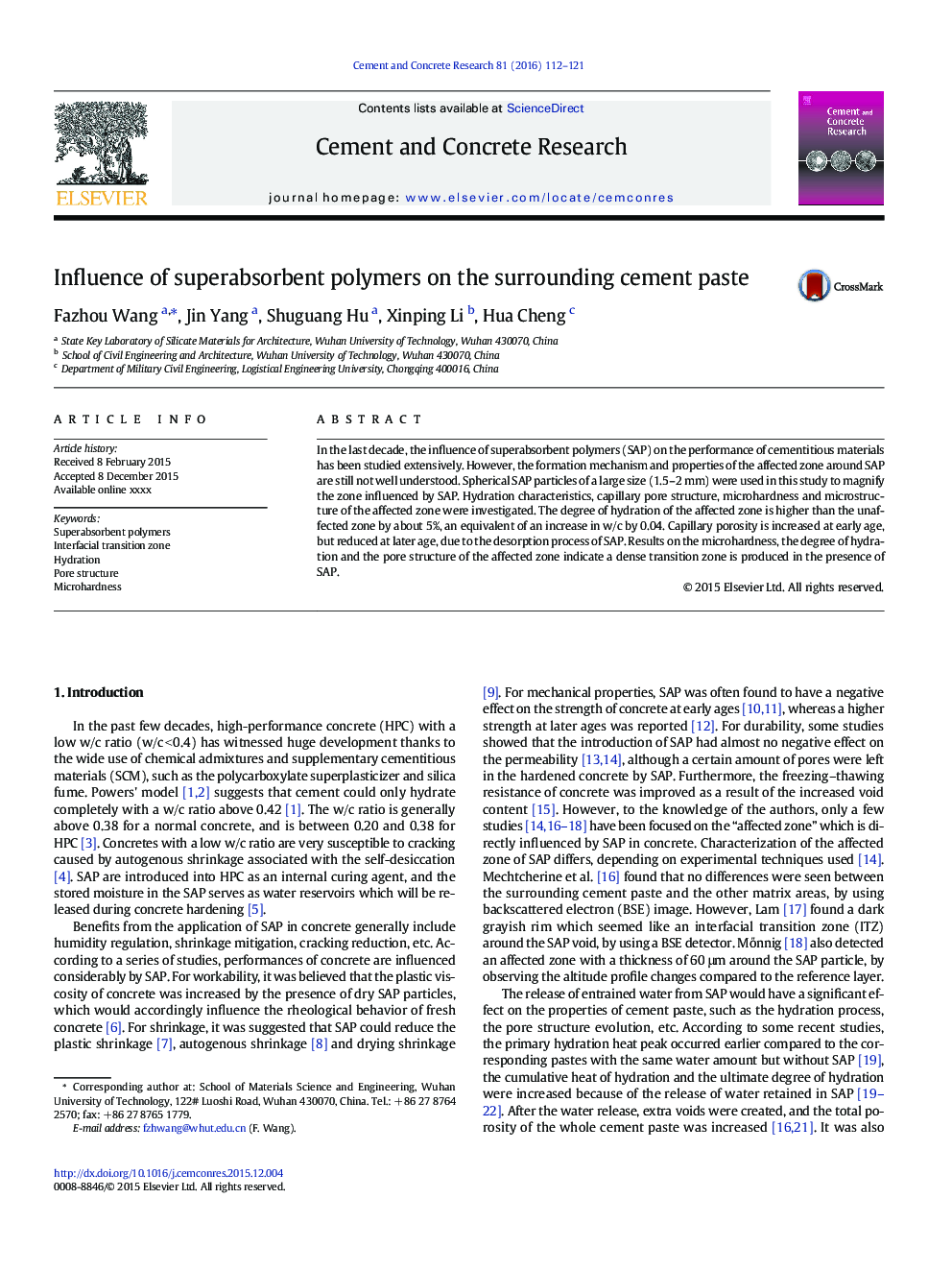| Article ID | Journal | Published Year | Pages | File Type |
|---|---|---|---|---|
| 7885275 | Cement and Concrete Research | 2016 | 10 Pages |
Abstract
In the last decade, the influence of superabsorbent polymers (SAP) on the performance of cementitious materials has been studied extensively. However, the formation mechanism and properties of the affected zone around SAP are still not well understood. Spherical SAP particles of a large size (1.5-2Â mm) were used in this study to magnify the zone influenced by SAP. Hydration characteristics, capillary pore structure, microhardness and microstructure of the affected zone were investigated. The degree of hydration of the affected zone is higher than the unaffected zone by about 5%, an equivalent of an increase in w/c by 0.04. Capillary porosity is increased at early age, but reduced at later age, due to the desorption process of SAP. Results on the microhardness, the degree of hydration and the pore structure of the affected zone indicate a dense transition zone is produced in the presence of SAP.
Related Topics
Physical Sciences and Engineering
Engineering
Industrial and Manufacturing Engineering
Authors
Fazhou Wang, Jin Yang, Shuguang Hu, Xinping Li, Hua Cheng,
